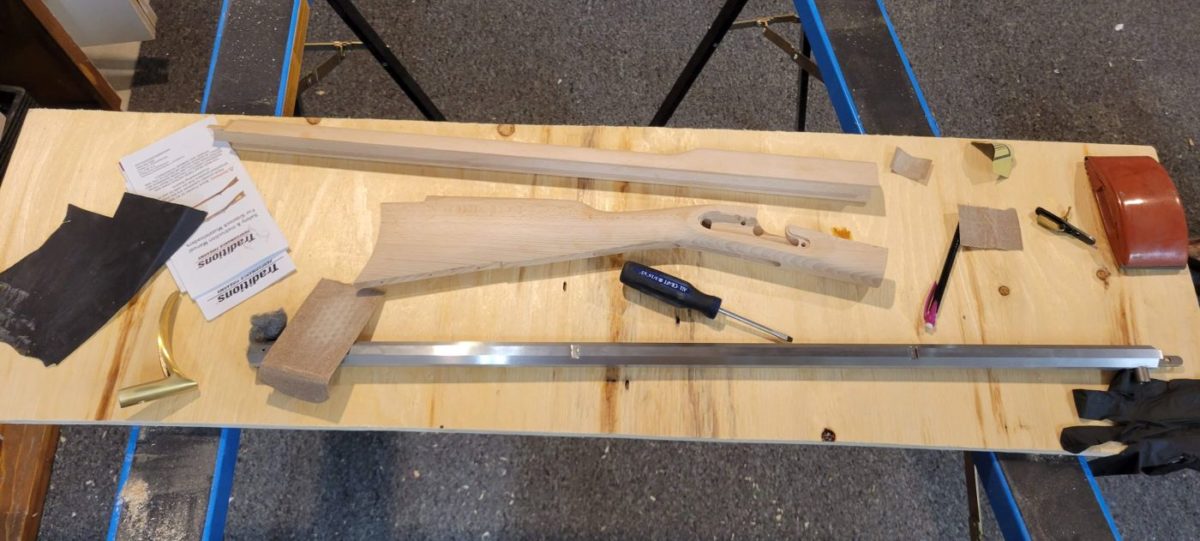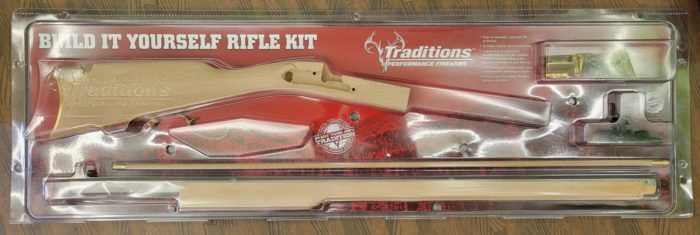
Cabela’s has the Traditions Kentucky Rifle kit on for $399 Canadian pesos once in a while and I get tempted every time. When it last came up for sale, I couldn’t resist because I’m a sucker for a good deal. The Traditions Kentucky Rifle kit is a “finish yourself” muzzleloader percussion rifle in .50 cal and made in Spain. I’d rather have got a flintlock kit but this one was cheaper and available.


I picked this kit up as a summer project to do with the kids.
Specifications
- 33.5″ barrel
- 1 in 66″ twist (good for roundball)
- 7lbs even
- Fixed front and rear sights
- Available in percussion (flintlock models are about $200 more)
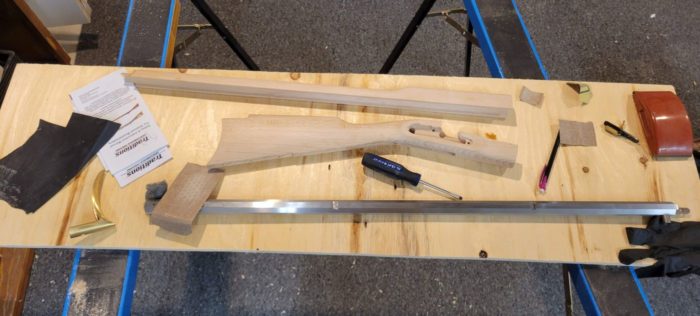
The instructions are a bit sparse. As an example, it makes mention of a ramrod retaining spring but doesn’t identify it in the parts diagram or mention how to install it. Just kind of leaves you up to your own devices on that. The pictures are small and black and white. It’d be cool if Traditions made a YouTube video that showed the whole build process.
Building the Traditions Kentucky Rifle Kit
Broadly, you:
- Dry fit your parts together, sand/inlet as needed:
- Sand stock to fit buttplate
- Trigger guard inletting to fit trigger guard
- Inletting for lock
- Match wood to metal parts (sand wood or brass to fit)
- Fit tenons on barrel and drill tenon pins
- Blue or brown the barrel
- Sand, stain, and oil the stock
- Assemble, test fire, crack a beer
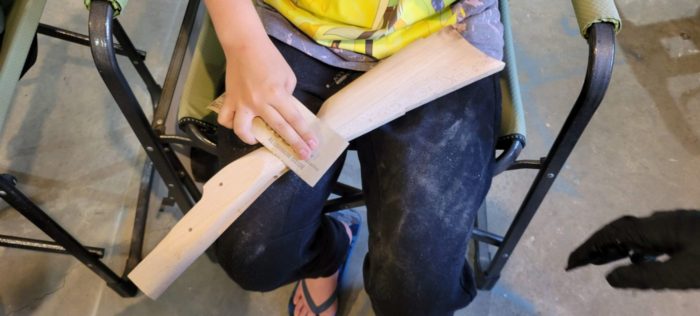
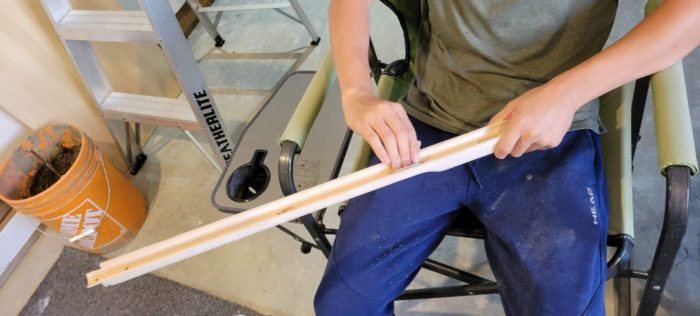
A bench sander will make quick work of the wood parts that need a lot of material removed, otherwise a sanding block and 3-5 different grits of sandpaper are all that’s needed.
Most of that stuff is pretty easy but the tenon pins require a #32 drill bit and that’s not an easy to find drill bit. It would be cool if they had used a size that was easier to find here (1/8?).
I tried to use the next drill bit size down and cracked the stock while installing since the tenons slipped. My fault for not following the instructions. Thankfully, wood is easy to repair and I got the right size drill bit from my buddy.
Finishing
I cold blued my barrel using Birchwood casey super blue and cold blued it. I did 3 coats, washing off excess then giving it a light scotch brite sanding between coats. Don’t forget to oil the crap out of it after you’re done because bluing won’t stop the rust.
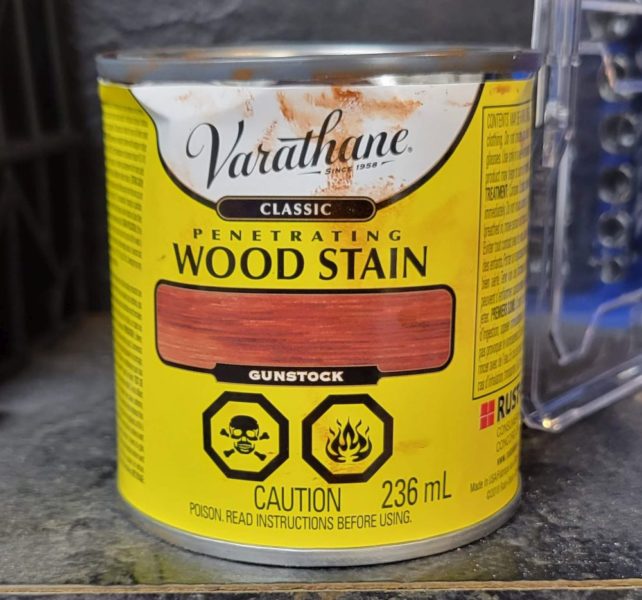
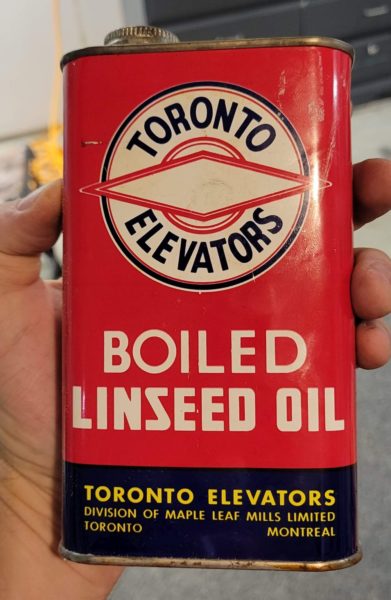
For the wood finish, I chose a “Gunstock” stain with boiled linseed oil overtop. Having done it, I regret using the stain and kind of wish I had just gone straight BLO as the wood didn’t take the stain very evenly on the forend or around the repairs where some wood glue had soaked into the wood. I opted to just use BLO on the ramrod and I prefer how that finished out.
I’ll likely re-sand and re-finish the stock in straight BLO.


Shooting the Traditions Kentucky Rifle
While some new muzzleloaders have a tight 1:25-ish twist so they can handle longer sabot bullets, the long barrel and slow twist rate (1 in 66) of the Kentucky are best suited for round balls. You can go with 0.495″ round balls and thin patches or 0.490″ balls and thicker patches. Round balls and patches are cheap and authentic.
I got surprisingly good accuracy from mine. I don’t want to brag too much but after 1 shot to sight and determine hold over (a lot), I was able to go 2 for 2 on subsequent shots at 300 meters!
The long barrel will be somewhat difficult to find an aftermarket rod for. The included field rod on mine was decently straight, which is nice because a lot of guys online seem to get crooked ones.
The trigger has a bit of rattle on it but the trigger pull itself is great. 3.2 lb trigger pull with no creep? Yes, please. At least with the percussion rifle, the time between pulling the trigger and the gun going off isn’t super delayed like it is on flintlocks: but when using the wrong caps. . .it can be 🙂
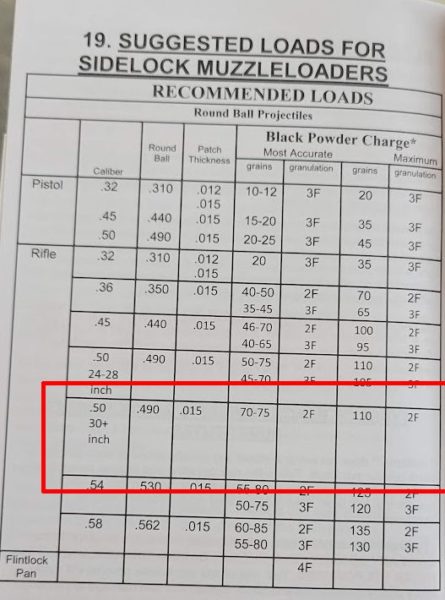
Feature wise, this rifle is simple. The lock has a fired, half-cock and fully cocked position. The sights are fixed but at least they look a lot nicer than some of the plastic sights I saw online on other reviews. The front sight has a tasteful brass blade to look at. If you need windage, you drift your sights. If you need elevation changes, you file the sights.
The curve in the buttplate is bad. If you place it way out on your shoulder, it won’t dig in and poke, but then you don’t have the rifle butt where it should be. I’m sure the toe plate and butt are great for hand-to-hand combat but they’re not great for shooting. It’ll look cool on the wall but if you want to actually shoot it a lot with higher power loads, you might want to fit a different buttplate or buttpad. With 80 grain loads or below, recoil is pretty light and the terrible curve doesn’t matter so much. If you opt for stiffer loads, it’ll dig in.
Conclusion
It’s been a while since I’ve had a muzzleloader and I missed it. The long loading process is fun, the cloud of smoke that it produces is hilarious at the range and they’re surprisingly accurate. The Traditions Kentucky rifle kit is just the right kind of kit to build with younger teenagers and giving a lot of help, or older teenagers with a lot less help. The build was interesting but not overwhelming and I learned a ton about how the rifle is made/assembled,
If you can get one of these kits on sale, I can’t recommend them highly enough. It won’t end up being a perfect specimen but it’ll have character you put into it.
